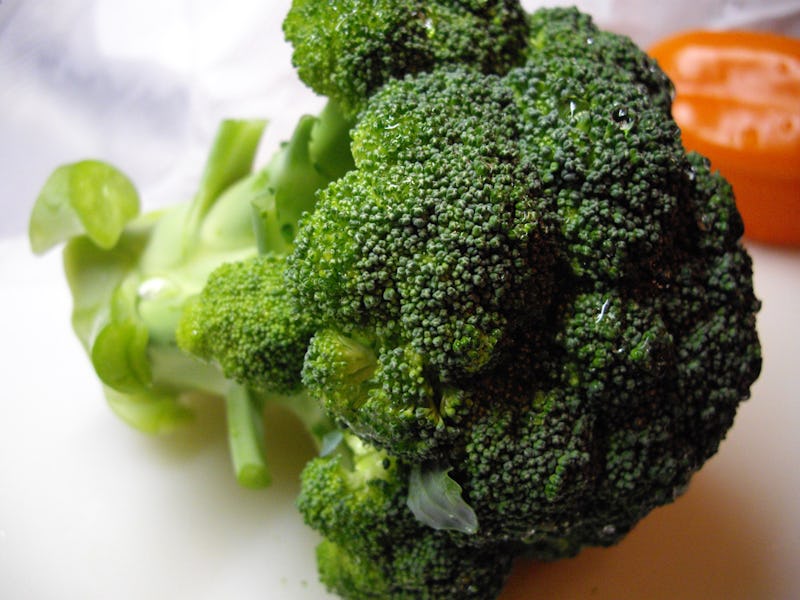Move Over Umami, There Might Be a New Sixth Taste
Don't start rewriting textbooks yet, though.

When you take a bite of food, there’s a lot going on at once. Your saliva glands start digesting food as you chew, your tongue and cheeks move around the ball of food — called a “bolus” — and your tongue and nose work together to figure out whether the stuff you’ve got in your mouth will nourish or kill you. And while there are near-infinite combinations of flavors, our brain breaks them down into just a small handful of categories: sweet, salty, bitter, sour, and umami — also known as savory. Now, scientists at University of California, Santa Barbara and Kookim University in Seoul, South Korea, say they’ve identified a sixth flavor: calcium.
In a paper published December 21 in the journal Neuron, the researchers outlined how they determined that fruit flies (Drosophila melanogaster, also known as vinegar flies) have a taste for calcium, as well as unique neurons that detect it. A mineral that’s crucial for our health, calcium can also be toxic in large quantities, so the researchers say it makes sense that we should be able to taste it.
Fruit flies can detect calcium. They even have specific neurons associated with it.
“We wanted to understand the underlying mechanisms used to respond to the presence of calcium in food,” said senior author Craig Montell, a UCSB professor of biology and neuroscience, in a statement. “We not only identified the taste neurons but also found three receptor proteins that are important in sensing calcium. In fact, eliminating any one of them allowed us to do an interesting survival experiment.”
In their experiment, the scientists gave fruit flies the choice between two halves of a petri dish. One half contained a fructose (sugar) solution, and the other half contained fructose and a high concentration of calcium. The unaltered fruit flies steered clear of the high-calcium solution once they tasted it, opting to munch on the plain sugar half of the dish. But the flies who had any one of their three calcium taste receptor proteins removed ate the high-calcium solution and died.
Therefore, they concluded that fruit flies must be able to taste high levels of calcium in order to avoid it. They also say that this suggests humans and other animals can probably taste it, too.
“In humans, high calcium is associated with many diseases and can even be life threatening,” said Montell in the statement. “Our results suggest that calcium taste might function primarily as a deterrent in wide range of animals, including humans.” If they’re right, it would change what we know about how humans and other animals taste. But they still have a way to go before we start rewriting textbooks.
The glutamic acid in miso is responsible for the taste we call "umami."
For over 100 years, scientists have agreed that our tongues can detect five flavors. Umami — from the Japanese adjective “umai,” which means “delicious” — was the most recently discovered of the five. Kikunae Ikeda, a chemistry professor at the Imperial University of Tokyo, published his paper on it in 1909, in which he described the compound responsible for the flavor: glutamic acid. Since then, other scientists have claimed they’d discovered an elusive sixth flavor, but generally those claims have not panned out.
Scientists have tried to make the case for including fat, starch, and even water among the primary tastes, but we still just have five. So if the authors of the most recent study want theirs to make it into number six, they’ll need to prove that animals besides fruit flies can taste calcium.
Abstract: Many animals, ranging from vinegar flies to humans, discriminate a wide range of tastants, including sugars, bitter compounds, NaCl, and sour. However, the taste of Ca2+ is poorly understood, and it is unclear whether animals such as Drosophila melanogaster are endowed with this sense. Here, we examined Ca2+ taste in Drosophila and showed that high levels of Ca2+ are aversive. The repulsion was mediated by two mechanisms — activation of a specific class of gustatory receptor neurons (GRNs), which suppresses feeding and inhibition of sugar-activated GRNs, which normally stimulates feeding. The distaste for Ca2+, and Ca2+-activated action potentials required several members of the variant ionotropic receptor (IR) family (IR25a, IR62a, and IR76b). Consistent with the Ca2+ rejection, we found that high concentrations of Ca2+ decreased survival. We conclude that gustatory detection of Ca2+ represents an additional sense of taste in Drosophila and is required for avoiding toxic levels of this mineral.